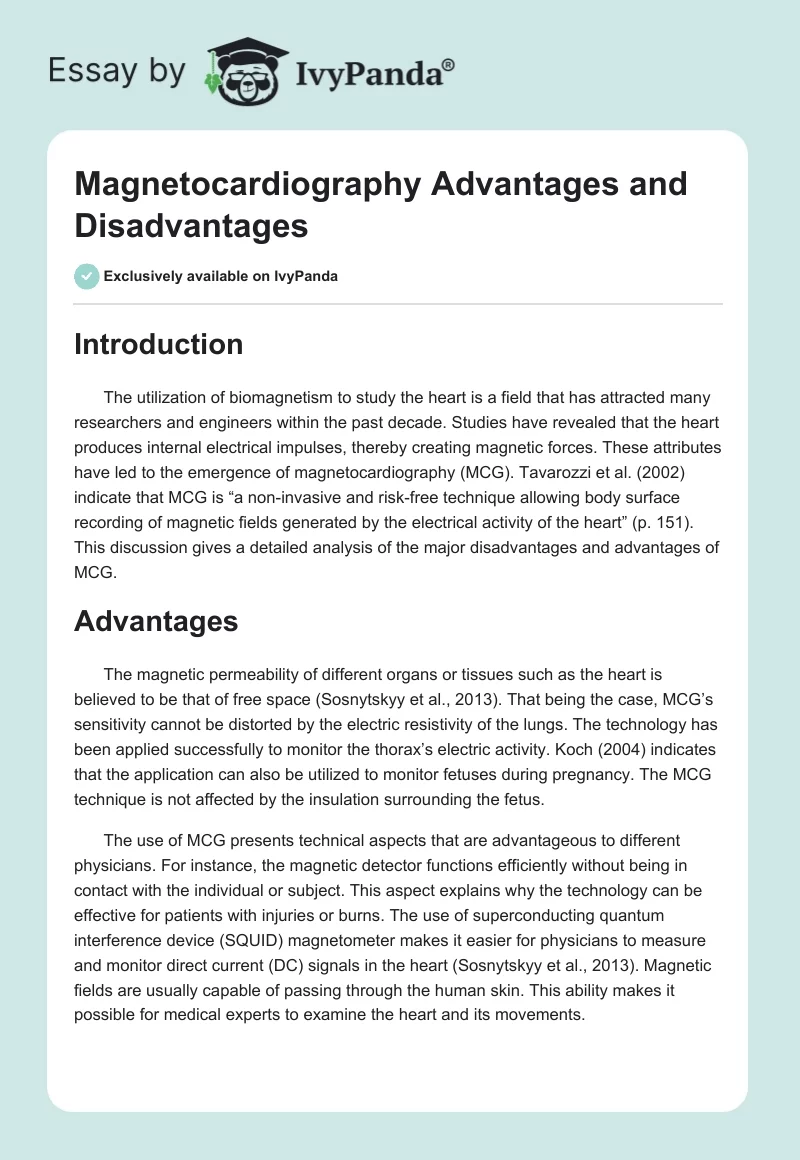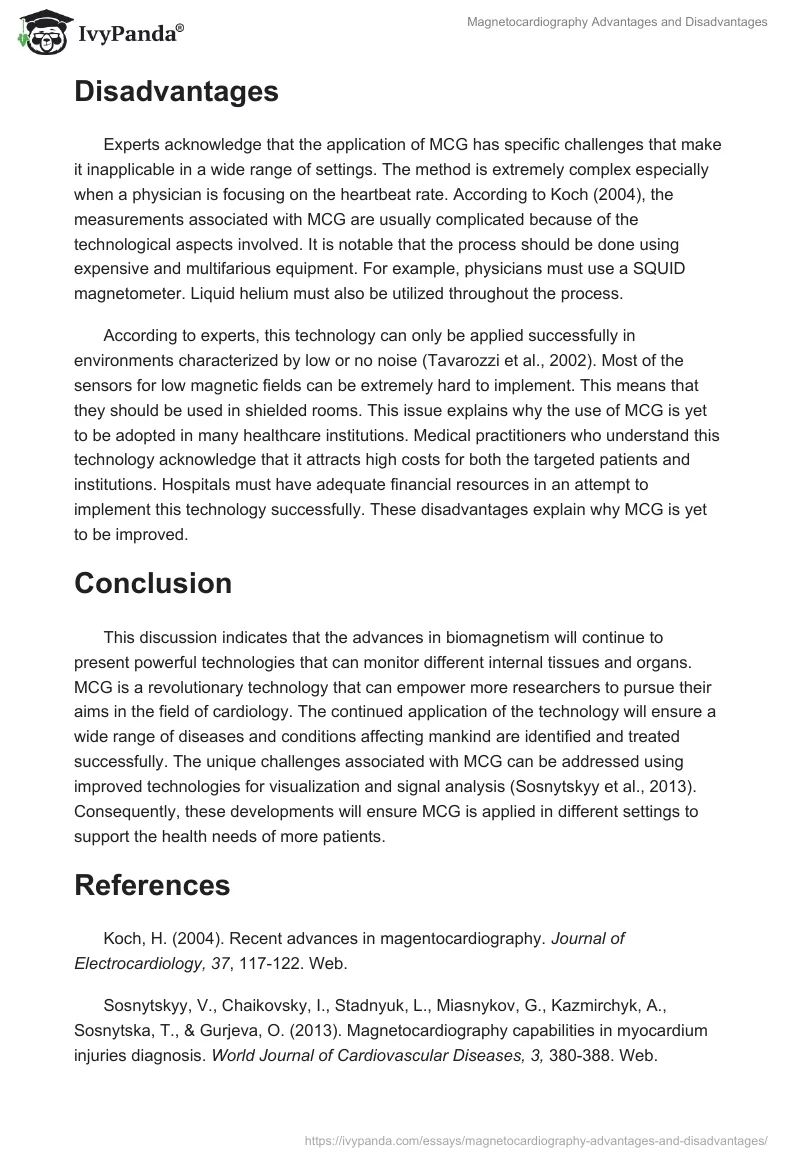Introduction
The utilization of biomagnetism to study the heart is a field that has attracted many researchers and engineers within the past decade. Studies have revealed that the heart produces internal electrical impulses, thereby creating magnetic forces. These attributes have led to the emergence of magnetocardiography (MCG). Tavarozzi et al. (2002) indicate that MCG is “a non-invasive and risk-free technique allowing body surface recording of magnetic fields generated by the electrical activity of the heart” (p. 151). This discussion gives a detailed analysis of the major disadvantages and advantages of MCG.
Advantages
The magnetic permeability of different organs or tissues such as the heart is believed to be that of free space (Sosnytskyy et al., 2013). That being the case, MCG’s sensitivity cannot be distorted by the electric resistivity of the lungs. The technology has been applied successfully to monitor the thorax’s electric activity. Koch (2004) indicates that the application can also be utilized to monitor fetuses during pregnancy. The MCG technique is not affected by the insulation surrounding the fetus.
The use of MCG presents technical aspects that are advantageous to different physicians. For instance, the magnetic detector functions efficiently without being in contact with the individual or subject. This aspect explains why the technology can be effective for patients with injuries or burns. The use of superconducting quantum interference device (SQUID) magnetometer makes it easier for physicians to measure and monitor direct current (DC) signals in the heart (Sosnytskyy et al., 2013). Magnetic fields are usually capable of passing through the human skin. This ability makes it possible for medical experts to examine the heart and its movements.
Disadvantages
Experts acknowledge that the application of MCG has specific challenges that make it inapplicable in a wide range of settings. The method is extremely complex especially when a physician is focusing on the heartbeat rate. According to Koch (2004), the measurements associated with MCG are usually complicated because of the technological aspects involved. It is notable that the process should be done using expensive and multifarious equipment. For example, physicians must use a SQUID magnetometer. Liquid helium must also be utilized throughout the process.
According to experts, this technology can only be applied successfully in environments characterized by low or no noise (Tavarozzi et al., 2002). Most of the sensors for low magnetic fields can be extremely hard to implement. This means that they should be used in shielded rooms. This issue explains why the use of MCG is yet to be adopted in many healthcare institutions. Medical practitioners who understand this technology acknowledge that it attracts high costs for both the targeted patients and institutions. Hospitals must have adequate financial resources in an attempt to implement this technology successfully. These disadvantages explain why MCG is yet to be improved.
Conclusion
This discussion indicates that the advances in biomagnetism will continue to present powerful technologies that can monitor different internal tissues and organs. MCG is a revolutionary technology that can empower more researchers to pursue their aims in the field of cardiology. The continued application of the technology will ensure a wide range of diseases and conditions affecting mankind are identified and treated successfully. The unique challenges associated with MCG can be addressed using improved technologies for visualization and signal analysis (Sosnytskyy et al., 2013). Consequently, these developments will ensure MCG is applied in different settings to support the health needs of more patients.
References
Koch, H. (2004). Recent advances in magentocardiography. Journal of Electrocardiology, 37, 117-122. Web.
Sosnytskyy, V., Chaikovsky, I., Stadnyuk, L., Miasnykov, G., Kazmirchyk, A., Sosnytska, T., & Gurjeva, O. (2013). Magnetocardiography capabilities in myocardium injuries diagnosis. World Journal of Cardiovascular Diseases, 3, 380-388. Web.
Tavarozzi, I., Comani, S., De Gratta, C, Di Luzio, S., Romani, G. L., Gallina, S., … De Caterina, R. (2002). Magnetocardiography: current status and perspectives. Part II: Clinical applications. Italian Heart Journal: Official Journal of the Italian Federation of Cardiology, 3, 151-165. Web.


